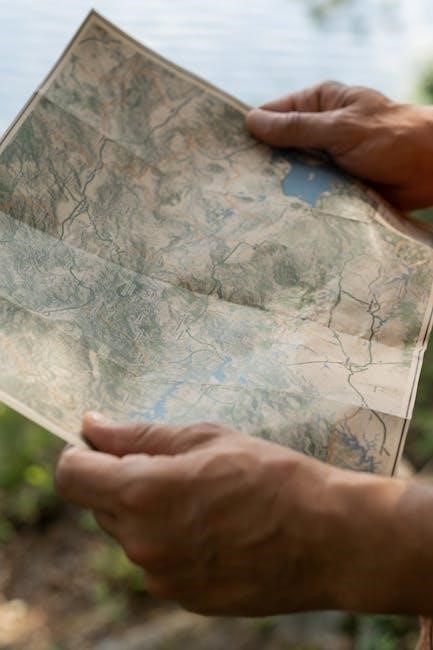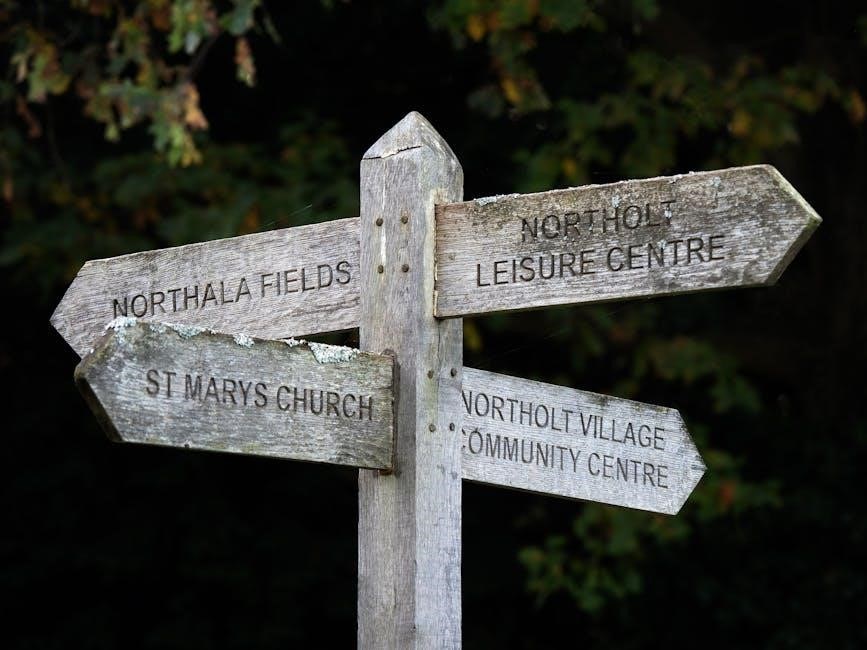
trail guide to the body 5th ed
Trail Guide to the Body 5th Edition: A Comprehensive Overview
The 5th Edition of Trail Guide to the Body is an acclaimed resource. It provides beautifully illustrated information for learning palpation and the musculoskeletal system. This edition includes detailed maps with over 1,400 illustrations.
Trail Guide to the Body, now in its 5th Edition, is a hands-on guide designed to help students and practitioners locate muscles, bones, and other body structures. Before assessing or treating a muscle, one must first be able to find it! This edition offers beautifully illustrated information for learning palpation and mastering the musculoskeletal system. This makes the essential manual therapy skills interesting, memorable, and easy to understand.
With over 500 pages and 1,400 illustrations, the book covers more than 162 muscles, 206 bones, 33 ligaments, and 110 bony landmarks, providing an invaluable map of the human body. The 5th Edition also includes an extensive appendix detailing trigger points.

Key Features of the 5th Edition
The 5th Edition offers key features such as detailed musculoskeletal coverage. It boasts high-quality illustrations, and clear palpation techniques. These elements combine to make learning anatomy more accessible.
Detailed Musculoskeletal Coverage
The Trail Guide to the Body, 5th Edition provides detailed musculoskeletal coverage. It covers over 162 muscles, 206 bones, 33 ligaments, and 110 bony landmarks. This extensive coverage ensures a thorough understanding of the human body’s structural components. The book serves as an invaluable map of the body. It is suitable for students and practitioners in various manual therapy fields. The detailed information aids in accurate assessment and treatment. This edition includes an extensive 56-page appendix. It describes common trigger point locations and pain patterns of 100 muscles, enhancing its practical application.
High-Quality Illustrations
The Trail Guide to the Body, 5th Edition features high-quality illustrations that enhance the learning experience. With over 1,400 detailed images, the book provides a visual guide to the musculoskeletal system. These illustrations make it easier to locate muscles, bones, and other anatomical structures. The clear and precise visuals support effective palpation and assessment skills. The illustrations are designed to be memorable and easy to understand. This feature is particularly beneficial for visual learners. The book’s acclaimed illustrations serve as a valuable tool for students and practitioners alike. They aid in mastering essential manual therapy skills.
Palpation Techniques
The Trail Guide to the Body 5th Edition emphasizes practical palpation techniques. It enables users to locate muscles, bones, and landmarks accurately. The book provides step-by-step instructions for finding anatomical structures. These instructions often include patient positioning alternatives to enhance accessibility. Mnemonics are used to aid memorization of key landmarks. The text considers anatomical differences between male and female bodies. Detailed palpation tips are included for each structure. Mastering these techniques is essential for assessment and treatment in manual therapy. The palpation guidance makes the book invaluable for students and practitioners. It promotes effective hands-on skills.

Target Audience and Uses
This guide is ideal for students in manual therapy fields. It is also suited for practitioners in bodywork modalities. The book is beneficial for massage therapists, athletic trainers, and physical therapists alike.
Students in Manual Therapy Fields
Trail Guide to the Body is a gold standard for students in athletic training and occupational therapy. It is also useful for physical therapy, massage therapy, and exercise science programs. The book empowers students with essential manual therapy skills. The detailed illustrations aid in understanding musculoskeletal anatomy and palpation techniques. Students can master the location of muscles, bones, and landmarks. The guide makes learning interesting and memorable. It provides an invaluable map of the body. The text supports success in various healthcare professions. Its hands-on approach is invaluable for practical application in training.
Practitioners in Various Bodywork Modalities
Trail Guide to the Body benefits practitioners in massage therapy, physical therapy, and sports training. It also helps those in various bodywork modalities. The book serves as a practical resource. It improves skills in locating muscles, bones, and bony landmarks. Practitioners can use it to enhance their assessment and treatment techniques. The guide offers detailed palpation instructions for effective manual therapy. The illustrations provide a clear understanding of the musculoskeletal system. It is useful for both experienced professionals and those new to bodywork. Its focus on hands-on application makes it an invaluable tool for practice. The guide aids in precise and effective treatments.

Content and Structure
The 5th Edition includes detailed coverage of over 162 muscles, 206 bones, and 110 bony landmarks. It also contains 33 ligaments. The book provides a comprehensive map of the human body.
Muscles, Bones, Ligaments, and Bony Landmarks
Trail Guide to the Body, 5th Edition, offers detailed anatomical information. It covers over 162 muscles with origins, insertions, and actions. It also thoroughly presents 206 bones, providing essential skeletal knowledge. The guide meticulously illustrates 33 ligaments, crucial for understanding joint stability. Furthermore, it highlights 110 bony landmarks, aiding in precise palpation. These landmarks are essential for locating muscles and other structures. High-quality illustrations accompany each section, enhancing comprehension and retention. The book emphasizes the relationships between these structures, making it invaluable for students and practitioners. This comprehensive approach facilitates effective manual therapy and assessment skills. It serves as an indispensable map of the human body.
Appendix on Trigger Points
The 5th Edition of Trail Guide to the Body includes an extensive 56-page appendix. This appendix focuses on common trigger point locations and their associated pain patterns. It covers approximately 100 muscles, detailing their specific trigger points. The appendix provides illustrated information to aid in locating these points accurately. Understanding trigger points is crucial for effective manual therapy. This section helps practitioners identify and treat pain referral patterns. The inclusion of this detailed appendix enhances the book’s practical value. It allows students and professionals to address myofascial pain effectively. The trigger point information complements the comprehensive musculoskeletal coverage. This addition makes the book a more complete resource for bodywork practitioners.
Supplementary Materials
To enhance learning, the Trail Guide to the Body, 5th Edition, offers additional resources. These include a student workbook and flashcards. These materials aid in mastering palpation and musculoskeletal anatomy.
Student Workbook
The Trail Guide to the Body, 5th Edition, student workbook serves as a crucial companion. It reinforces the book’s content through practical exercises and activities. The workbook enhances understanding of palpation techniques. It also helps in locating muscles, bones, and bony landmarks. It’s designed to make learning interactive and memorable. This workbook often includes fill-in-the-blank questions, labeling exercises, and review questions. These elements ensure a comprehensive grasp of the musculoskeletal system. The student workbook helps students solidify their knowledge. It prepares them for clinical applications and examinations in manual therapy fields. It complements the main text by providing hands-on practice. This practice leads to greater confidence in applying the learned concepts. It is an invaluable tool for effective learning.
Flashcards
Trail Guide to the Body flashcards are valuable tools. They aid in memorizing key anatomical structures and palpation techniques. These flashcards usually come in multiple volumes, focusing on different aspects of the musculoskeletal system. One volume typically covers bones, joints, and movements. Another volume focuses on muscles, origins, insertions, and actions. The flashcards feature illustrations from the book. They include concise descriptions. This allows for quick review and self-testing. They enhance learning for students in manual therapy fields. Flashcards are particularly useful for visual learners. They reinforce the information presented in the textbook. They are a portable and convenient way to study anatomy. They can be used individually or in groups. They are great for exam preparation. They are a supplementary resource to the 5th edition.

Why the 5th Edition is a Gold Standard
The 5th edition is the gold standard because it delivers beautifully illustrated information. It makes mastering manual therapy skills interesting, memorable, and easy. The spiral-bound format ensures practical use.
Accurate and Easy-to-Follow Instructions
The Trail Guide to the Body, 5th Edition provides accurate, step-by-step instructions. It ensures that users can effectively locate muscles, bones, and bony landmarks. The clear and concise language, coupled with detailed illustrations, simplifies the learning process.
Whether you are a student or a practitioner, the guide offers invaluable support. It assists in mastering palpation techniques and understanding musculoskeletal anatomy. The book makes complex concepts accessible. It also ensures a solid foundation for manual therapy skills. The book’s instructions are designed for practical application. This makes it an indispensable tool in any bodywork modality.
Spiral-Bound Format for Practical Use
The Trail Guide to the Body, 5th Edition features a spiral-bound format, enhancing its practicality. This design allows the book to lay flat, making it easy to use in a clinical or study setting. The spiral binding ensures durability. It also stands up well to frequent use.
Students and practitioners can easily flip through the pages. They can also reference specific anatomical structures. This makes it a convenient tool for hands-on learning and application. The format is specifically chosen to support the book’s purpose. It is a hands-on guide for locating muscles, bones, and other anatomical landmarks. The spiral binding adds to the overall user-friendly design.